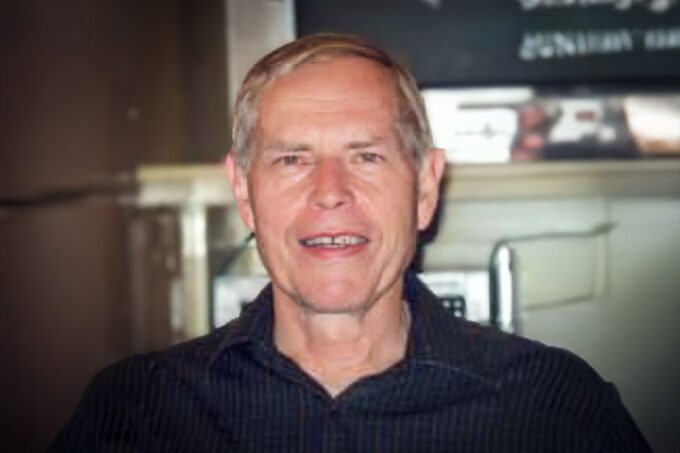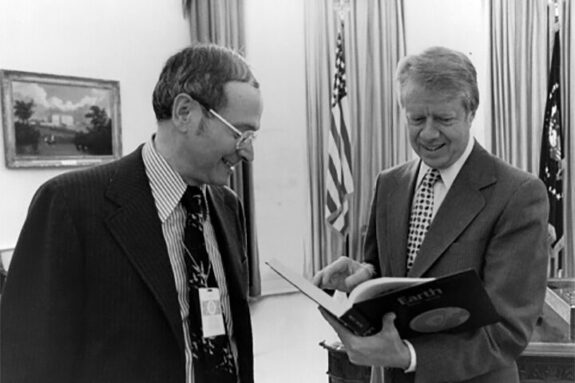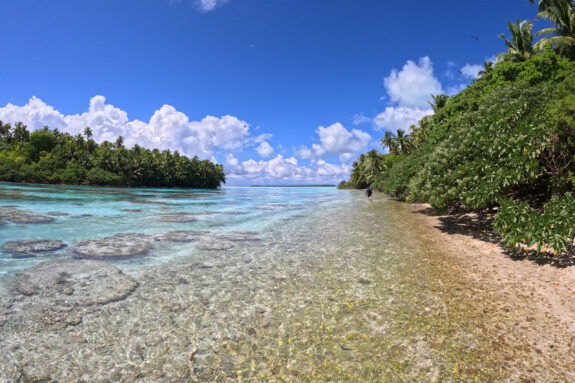Burrell Clark Burchfiel, professor emeritus in MIT’s Department of Earth, Atmospheric & Planetary Sciences (EAPS), died February 9. He was 89.
Internationally recognized for the study of plate tectonics and continental crusts, Burchfiel spent his career in the field mapping the geology of the world, including the Western United States, Eastern Europe, Scandinavia, South America, North Africa, the Middle East, and China. In the later part of his career, his work focused on the geological history and evolution of the Tibetan plateau, paying attention to the processes of rifting and extension of the lithosphere and intracontinental deformation related to plate interaction.
Burchfiel’s novel research incorporated geophysics and geochemistry, earning recognition from the National Academy of Sciences (NAS) for providing “compelling new insights into the processes by which continents change and grow — perhaps the most exciting new extension of the plate-tectonics concept.”
“I know of no earth scientist who has walked and climbed across more of the Earth, measured its outcrops, mapped its structures, sited GPS stations to measure its strains, and then sat down to write up his discoveries,” said University of Southern California geologist Gregory Davis in 2009 while presenting Burchfiel with the Penrose Medal, one of the highest honors granted by the Geological Society of America (GSA).
Upon Burchfiel’s retirement in 2015, EAPS Professor Emeritus Timothy Grove characterized his colleague of four decades as “a giant in the field.”
“Clark…defined the geological fieldwork aspect of our department, and has been very, very active in teaching graduates and undergraduates, who’ve gone on to distinguished positions at the best universities in the United States and even abroad, [in] places such as China.”

Burchfiel’s first notable discovery came in 1966 while working as a faculty member at Rice University. He found that the central segment of Death Valley, California was formed by a “pull-apart basin”, where the movement of two neighboring fault zones pulled the area apart. This created Badwater Basin, the lowest point in North America. The next year, he received a Guggenheim Fellowship to study the Dinarides Mountains of what was then Yugoslavia, shedding light on a poorly understood section of this mountain range. He then began a 25-year study which yielded a complete cross section of the northern Caledonides in arctic Scandinavia.
Burchfiel joined the MIT EAPS faculty in 1976, and shortly after embarked on geology field studies in China. This started a multi-decade collaboration where Chengdu and Beijing became a “home away from home,” according to Burchfiel. There he studied tectonic activity on the Haihyuan fault and on the Tien Shan mountains. He also traveled to the Himalaya to study the South Tibetan detachment and the Cenozoic extrusions process. In the late 90s he helped establish a geological GPS network in Tibet, which aided the development of novel theories about the physical processes at play in the thickened crust found in Tibet.
“Dr. Burchfiel emphasized the need for allowing American geologists to get involved with research investigations overseas and in unfamiliar territory, and to work in close conjunction with a local counterpart in order to achieve optimum results,” wrote York College/CUNY geologist Nazrul Khandaker in 2013.
For his work in China and Tibet, Burchfiel was elected as a Foreign Member of the Chinese Academy of Sciences in 1998, one of only two American geologists at the time. In 2006, he was also named an Honorary Professor of Geology at China University of Geosciences in Beijing, and ten years later was recognized by the Chinese government for his contribution to both Chinese science and “China-US cooperation in Science and Technology.”
“Clark has shown that you have a hard time understanding how the world works if you don’t know the geological history and you can’t decipher it,” says Oliver Jagoutz, current chair of the EAPS Program in Geology, Geochemistry, and Geobiology. “He guided and influenced our field for a solid 50 years and established the importance of field observation in this house, which is honored to this day.”
In more than five decades of research, Burchfiel authored nearly 200 papers and was recognized by many scientific institutions, including his election to the NAS in 1985. He was also named a fellow of the American Geophysical Union and the American Academy of Arts and Sciences. As a fellow of the GSA, Burchfiel was honored in 1995 with a Career Contribution Award from the Structural Geology and Tectonics Division; he went on to serve as president of the society in 2003, before earning the Penrose Medal in 2009 and the International Section Distinguished Career Award in 2013.

Burchfiel also mentored over 50 PhD students, a component of his work where he drew great inspiration. “Even though there was a teacher/student relationship I must admit I often learned just as much from their fertile and unencumbered minds as they learned from me,” he said in his Penrose Medal remarks. “To watch them grow to become leaders in our science after they left Rice and MIT has been a continuing source of satisfaction and pleasure, and remains the most long-lasting legacy of teaching.”
“Even though he was so highly accomplished and respected, he was always really easy to talk to, regardless at which level in the academic world you were,” says Jagoutz, who recalls that conversations with Burchfiel always felt insightful—and that he liked to remind people to enjoy their work and to not take themselves too seriously.
Born on March 21, 1934 in Stockton, California, Burchfiel did not grow up with academic ambition in mind. “In high school the only things of importance were surfing and athletics, and I got through my classes in unspectacular fashion,” he said in his Penrose Medal remarks. He was admitted to Stanford on a football scholarship, and, for the first couple of years, his academics were lackluster.
However, his introductory geology classes, replete with field trips and an engaging teaching style, began to shift his attitude towards science; his last two years at Stanford crystallized what would become his lifelong interest in field studies. After Burchfiel received his bachelor’s degree in 1957, he went on at Stanford to complete a Master of Science in Geology in 1958. Assuming he would be going to work for the oil industry as he had done for several previous summers, Burchfiel’s thesis advisor, Hubert Schenck, pushed him to pursue a PhD at Yale instead. There, Burchfiel became interested in regional geology and field-based tectonics, and in his final year worked as a geologist with the U.S. Geological Survey. After receiving his PhD, he accepted a position at Rice University, where he worked for 15 years before coming to MIT.
At MIT, Burchfiel held the title of Schlumberger Professor of Geology from 1984 until his retirement. Of his almost 40-year tenure in EAPS, Burchfiel mused: “I have often said that the department at MIT is a place I could never leave because of the stimulating multidisciplinary research and cooperation that is possible — and in a very friendly environment.”
Additional reporting by Kate S. Petersen and Paige Colley



